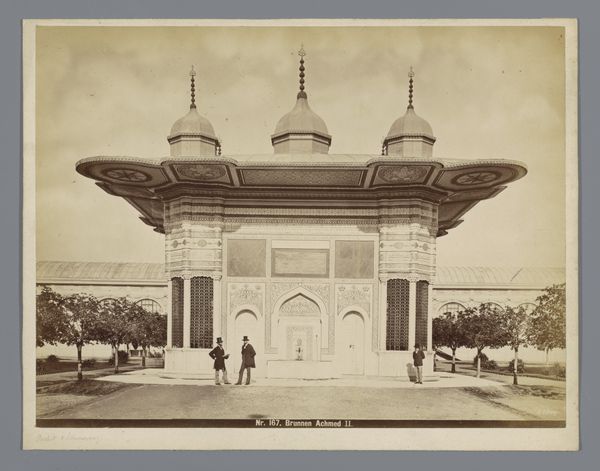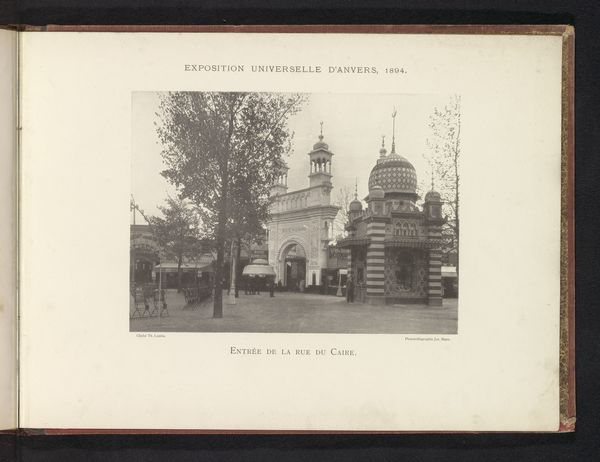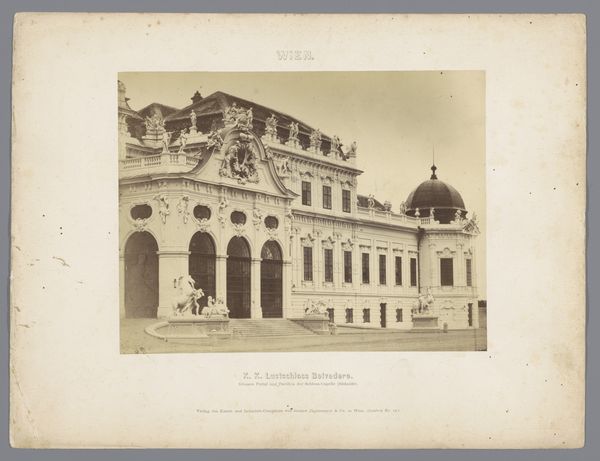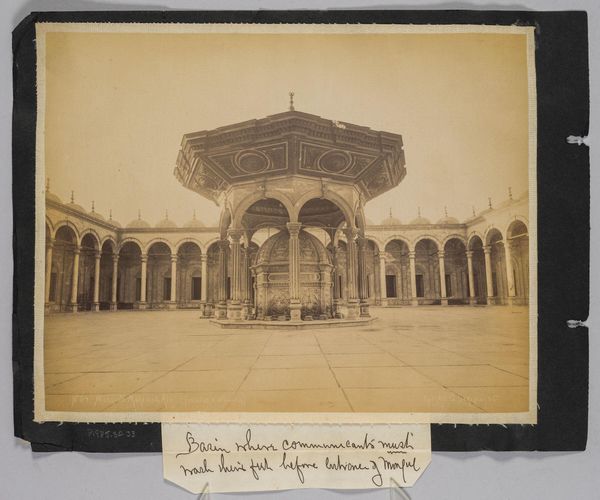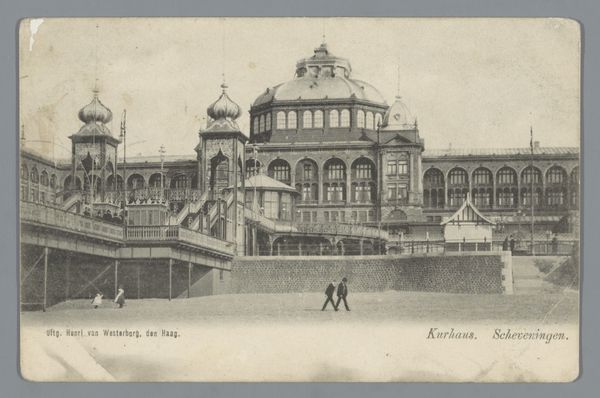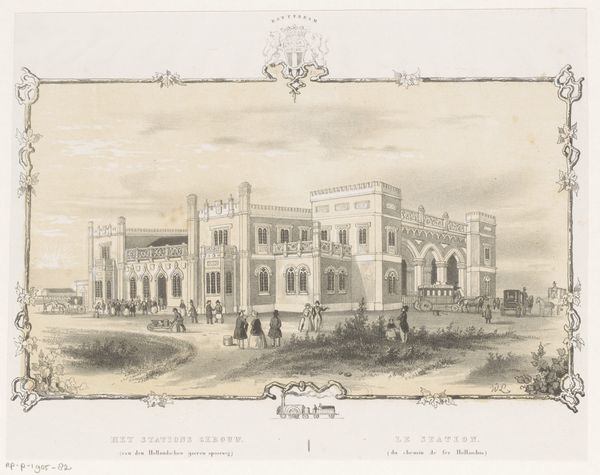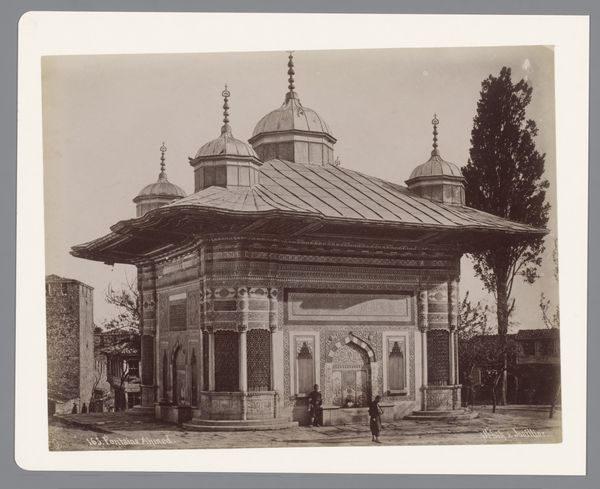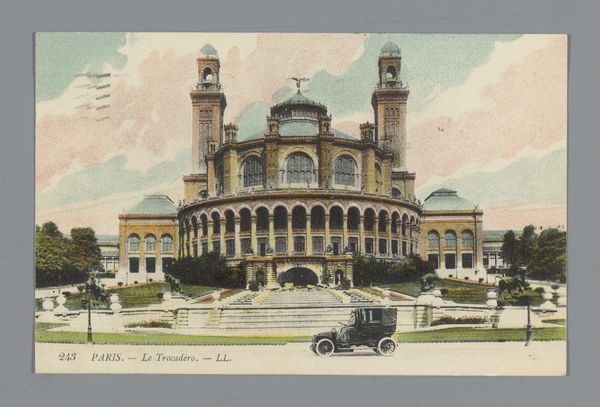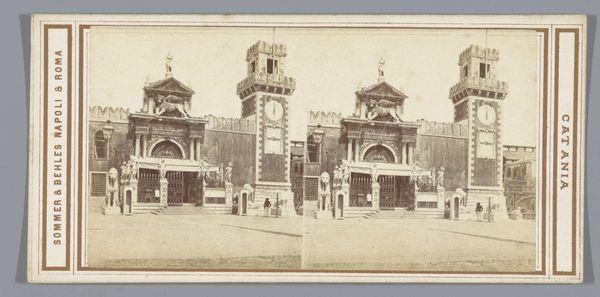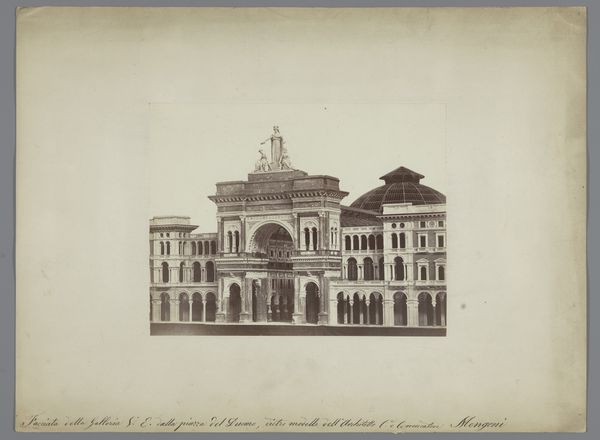
Dimensions: height 109 mm, width 166 mm
Copyright: Rijks Museum: Open Domain
Editor: This gelatin silver print, "Gezicht op de Trink-hall in Parc d'Avroy in Luik," by Léon & Lévy, captured sometime between 1880 and 1900, depicts a pavilion within a park. It’s a very balanced composition, and there’s a real sense of order. What do you see when you look at this image? Curator: It evokes a fascinating dance between cultural memory and aspirational identity. The Trink-hall itself, a place associated with health and leisure, becomes a symbol of civic pride. Do you notice how its architecture incorporates both classical elements and an exotic, almost Moorish, flair? Editor: Yes, those little domes on top are rather eye-catching, they have a very distinct style. It gives the building a feeling that I can't really put into words. Curator: That feeling is precisely where the power lies! The photograph speaks of Belgium’s colonial ambitions during that era. Images of "the Orient" were en vogue, and incorporating such details into public structures allowed people to associate their city with a worldly sense of refinement, sophistication, and cultural awareness. The fountain and gardens represent more than simple nature; they also mirror a highly curated image of civilization. What cultural assumptions might contemporaries make upon viewing this photograph? Editor: It almost suggests a longing to connect to something beyond Europe. Like a projection of exoticism and the comfort of domestic familiarity combined, it suggests harmony and maybe the building could act as an important cultural meeting space? Curator: Exactly! Consider how this image might have served as propaganda or documentation. These details would not have been accidental; the placement, the arrangement – all serve to construct an idealized vision. The photographic medium suggests scientific accuracy and documentation, giving a certain truthfulness to this staged view of the city. Editor: So, beyond its simple aesthetic charm, this photograph reflects deeper cultural undercurrents and symbolic meanings related to how Europeans saw the world, and their place within it, at the end of the 19th century. Thank you! Curator: Precisely! These constructed visual narratives shape perceptions and cultural attitudes, reflecting the complex dynamics between seeing and believing, and image and identity.
Comments
No comments
Be the first to comment and join the conversation on the ultimate creative platform.
